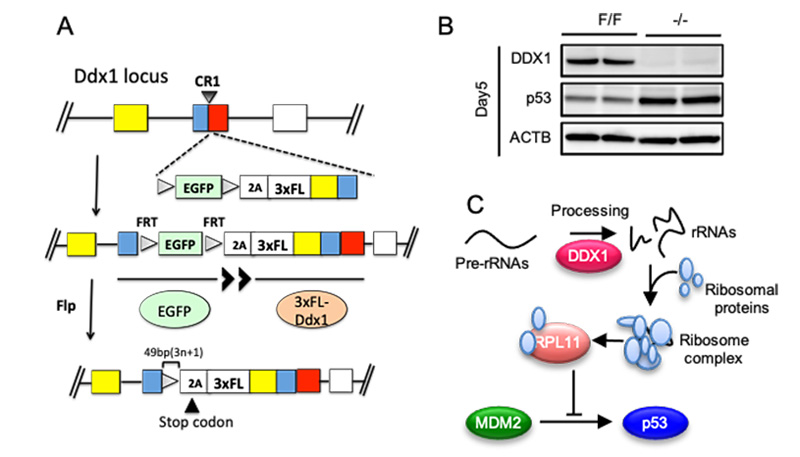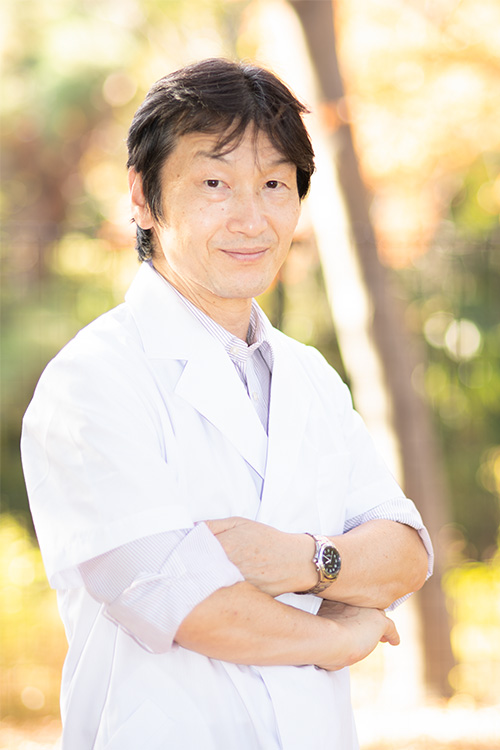
- HOME
- Stem Cell Project
Stem Cell Project
Stem cell based research for cancer immunotherapy and drug discovery
Research Summary
Dr. Yamanaka’s inducible pluripotent stem cell (iPSC) technology has opened a new avenue to overcome incurable diseases by cell transplantation. In 2011, we discovered that overexpression of Lhx2 (transcription factor) in hemogenic mesodermal cells resulted in ex vivo expansion of transplantable HSCs from mouse embryonic stem cells (ESCs) and iPSCs. Since then, we have been making efforts for applying this method to human iPSCs. We believe that comparison of the in vitro differentiation capacity of hematopoietic cells between mouse and human iPSCs will uncover novel and fundamental aspects of human HSC development.
We discovered that CXCL14 is one of the causative factors for obesity-associated diabetes. In contrast, CXCL14 is known to possess tumor-suppressive activity against lung and oral carcinomas. In 2017, we found that CXCL14 carries CpG DNA into dendritic cells. This causes activation of the TLR9 signaling pathway, which is effective in immune-suppression of cancers. We are vigorously investigating physiological roles of CXCL14 and its action mechanisms. CXCL14 is a promising tool for developing novel anti-cancer and anti-diabetes drugs.
The presence of cancer stem cells has been proposed in various types of human cancer. Presumably, both tissue and cancer stem cells commonly express critical transcriptional regulators and signal transducers. We have identified DDX1 (RNA helicase) and PTPN23 (tyrosine phosphatase) as essential molecules for the onset of testicular tumors. In 2020, we discovered that DDX1 is essential for ribosome RNA metabolism in ESCs and cancer cells. In the absence of DDX1, these cells stop proliferation and undergo apoptosis by p53 activation (Figure).

Conditional knockout system of ES cells uncovered a novel role of DDX1 in ribosome RNA processing which is linked to p53-mediated cell growth control.
Selected Publications
- Iwase, R. et al. (2021)“Identification of functional domains of CXCL14 involved in high-affinity binding and intracellular transport of CpG DNA.” J. Immunol., 207: 459
- Suzuki T, et al. (2020) “A novel all-in-one conditional knockout system uncovered an essential role of DDX1 in ribosomal RNA processing.” Nucl. Acid Res., (in press.)
- Sato K, et al. (2020) “Nitric oxide and a conditioned medium affect the hematopoietic development in a microfluidic mouse embryonic stem cell/OP9 co-cultivation system.” Micromachines, 11: 305.
- Nakajima M, et al. (2019) “In vitro differentiation of mouse T cell-derived hybrid cells obtained through cell fusion with embryonic stem cells.” Biochem. Biophys. Res. Commun. 513: 701-707.
- Kitajima K, et al. (2018) "Domain-specific biological functions of the transcription factor Gata2 on hematopoietic differentiation of mouse embryonic stem cells." Genes Cells 23: 753-766.
- Tanegashima K, et al. (2017) “CXCL14 acts as a specific carrier of CpG DNA into dendritic cells and activates Toll-like receptor 9-mediated adaptive immunity.” EBioMed. 24: 247-256.
